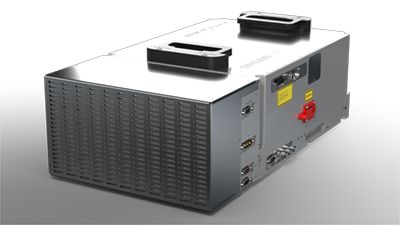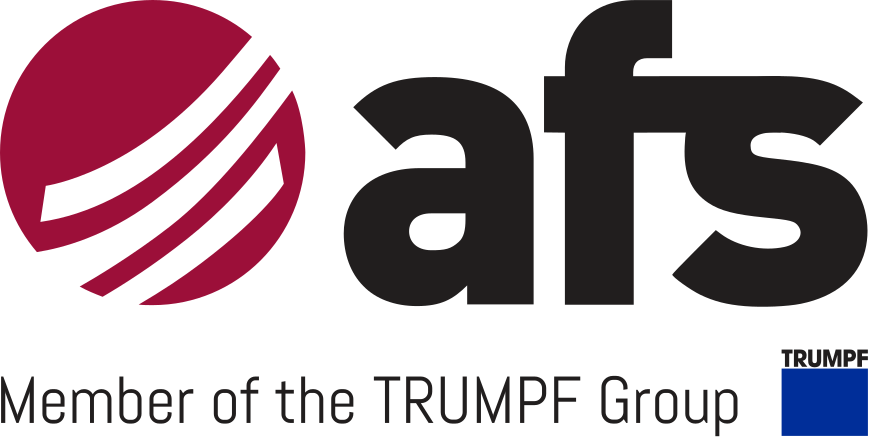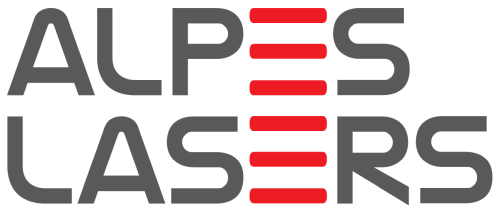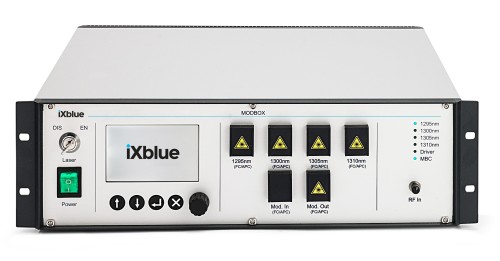pulsed lasers (original) (raw)
Definition: lasers emitting light in the form of pulses
- light sources
- lasers
* solid-state lasers
* diode-pumped lasers
* lamp-pumped lasers
* distributed feedback lasers
* dye lasers
* gas lasers
* free-electron lasers
* radiation-balanced lasers
* cryogenic lasers
* visible lasers
* eye-safe lasers
* infrared lasers
* ultraviolet lasers
* X-ray lasers
* upconversion lasers
* Raman lasers
* high-power lasers
* multi-line lasers
* narrow-linewidth lasers
* tunable lasers
* pulsed lasers
* Q-switched lasers
* mode-locked lasers
* gain-switched lasers
* burst mode lasers
* high-energy lasers
* nanosecond lasers
* picosecond lasers
* femtosecond lasers
* ring lasers
* seed lasers
* ultrafast lasers
* industrial lasers
* scientific lasers
* alignment lasers
* medical lasers
* space-qualified lasers
* miniature lasers
* OEM laser modules
* lasers for material processing
* lasers for quantum photonics
* lasers for Raman spectroscopy
* (more topics)
- lasers
Related: pulse generationlight pulsespulse trainslasersQ-switched lasersmode-locked lasersultrafast lasersgain switching
Opposite term: continuous-wave lasers
Page views in 12 months: 3794
DOI: 10.61835/uck Cite the article: BibTex BibLaTex plain textHTML Link to this page! LinkedIn
Content quality and neutrality are maintained according to our editorial policy.
📦 For purchasing pulsed lasers, use the RP Photonics Buyer's Guide — an expert-curated directory for finding all relevant suppliers, which also offers advanced purchasing assistance.
Contents
Difficulties with Continuous-wave Operation
Difficulties with Long Pulse Durations
Single-pulse, Repetitive and Burst Mode
Summary:
This article provides a comprehensive overview of pulsed lasers, which emit light in the form of optical pulses rather than as a continuous wave. It covers the main types of pulsed lasers, including Q-switched, mode-locked, gain-switched, and excimer lasers, detailing their typical pulse durations, energies, and repetition rates.
The text also explains the technical challenges associated with continuous-wave operation for some laser types and the difficulties in generating long pulses. Furthermore, it describes different modes of operation such as single-pulse, repetitive, and burst modes, discusses important aspects of pulse quality, and outlines methods for the amplification of laser pulses.
(This summary was generated with AI based on the article content and has been reviewed by the article’s author.)
What are Pulsed Lasers?
Pulsed lasers are lasers which emit light not in a continuous mode, but rather in the form of optical pulses (light flashes). The term is most commonly used for Q-switched lasers, which typically emit nanosecond pulses, but this article gives an overview of a wider range of pulse-generating lasers. Depending on the pulse duration, pulse energy, pulse repetition rate and wavelength required, very different methods for pulse generation and very different types of pulsed lasers are used. The article on pulse generation describes in more detail the technical methods, whereas this article discusses some types of pulsed lasers:
- Various types of actively or passively Q-switched lasers emit pulses in the nanosecond duration regime; particularly compact microchip lasers can also generate sub-nanosecond pulses. Most Q-switched lasers are solid-state bulk lasers, and some of them can achieve high pulse energies in the millijoule or even multi-joule region.
- Some solid-state bulk lasers are pumped with flash lamps but not Q-switched; in free-running mode (i.e., with pulsed pumping but no intracavity loss modulation), one obtains longer pulses and somewhat higher pulse energies.
- Excimer lasers are used for generating intense nanosecond pulses in the ultraviolet spectral region. They are pumped with rather short electric pulses.
- Some other gas lasers (e.g. nitrogen lasers) and metal vapor lasers (e.g. copper vapor lasers) are also driven with current pulses and could normally not work in continuous-wave operation.
- Ultrashort pulses with durations in the picosecond or femtosecond domain are usually generated with mode-locked lasers, which may be solid-state bulk lasers, fiber lasers or semiconductor lasers. Their pulse energies are generally quite small, and the pulse repetition rate is usually in the megahertz or gigahertz region. For higher pulse energies (roughly an order of magnitude more), one may use a cavity-dumped laser.
- Gain-switched semiconductor lasers are suitable for nanosecond or picosecond pulses with relatively low energy (→ picosecond diode lasers).
- Relatively long pulses can be generated e.g. with laser diodes in quasi-continuous-wave operation.
Difficulties with Continuous-wave Operation
Some types of lasers can hardly work in continuous-wave operation, but only in pulsed operation; that can have different reasons:
- In some cases, one can obtain a sufficiently high laser gain only with pump intensities which are practical only for pulsed pumping. For example, the required pump intensities would overheat the gain medium when applied for longer times.
- In some cases, one is dealing with self-terminating laser transitions.
For such reasons, one sometimes uses a pulsed laser with a high pulse repetition rate where continuous-wave operation would be fully suitable for the application, but hard to realize with the type of laser. An example is photolithography with excimer lasers.
Difficulties with Long Pulse Durations
While many laser applications benefit from very short pulse durations, there are a few cases where rather long pulses are desired. For example, long pulses allow for a very small optical linewidth and may avoid laser-induced damage due to their lower peak power.
However, it is often quite difficult to produce relatively long laser pulses — for example, with durations of several microseconds –, at least when a high pulse energy is required at the same time. The method of Q-switching can be optimized for long pulse durations, but with limitations; for example, it is not practical to use a very long laser resonator to maximize the resonator round-trip time. Another approach is to work with a rather low gain, but that implies a high sensitivity to intracavity losses.
Single-pulse, Repetitive and Burst Mode
Single-pulse Mode
Some pulsed lasers are operated in a single-pulse mode where each pulse can be freely triggered when the application demands it. In that regime, one often achieves rather high pulse energies, but only quite limited pulse repetition rates. It is suitable, for example for lamp-pumped solid-state lasers.
Repetitive Pulsing
Some lasers emit pulses with a constant pulse repetition rate. In the case of Q-switched lasers, this is often between 10 Hz and 100 kHz, while mode-locked lasers emit with very high repetition rates, typically tens or hundreds of megahertz, sometimes even many gigahertz. The energy per pulse is correspondingly low.
The pulse repetition rate may be reduced by some possibly large factor by using a pulse picker.
Burst Mode
For some applications, it is advantageous to use bursts (bunches) of pulses. That means that some number of pulses is emitted with a close temporal spacing (e.g. a couple of nanoseconds), forming a burst, and the next burst may occur only after much longer time.
Many laser types are not suitable for that mode of operation, or only with substantial additional technical effort. A quite flexible approach is to produce pulses with a seed laser diode and amplify those in a fiber amplifier. One may then define a burst simply by appropriately driving the seed laser. In order to compensate for gain saturation during the burst (i.e., a drop of pulse energy), one may apply a seed pulse energy which is rising during the burst.
For more details, see the article on burst mode lasers.
Pulse Quality
There are various aspects of pulse quality, some of which may be quite relevant for applications:
- It is often desirable to have very reproducible (constant) pulse parameters like pulse energy, duration, center wavelength and bandwidth. Also, the temporal pulse shape (optical power vs. time) and the evolution of optical phase should be quite constant for some laser applications.
- In some cases, it is important to avoid any pre-pulses or post-pulses. For example, in laser-induced nuclear fusion or in other high intensity physics experiments, it is important that the target is “taken by surprise” by an intense laser pulse, and not already evaporated by some unwanted pre-pulse.
- The pulse timing can also be important. Some lasers — particularly well stabilized mode-locked lasers — exhibit an extremely small timing jitter, particularly over small measurement time intervals (e.g. pulse-to-pulse jitter).
Amplification of Laser Pulses
For boosting the average power (particularly of high repetition rate pulse trains with moderate pulse energies), high-power fiber amplifiers are often well suited. For cases with lower repetition rate but higher pulse energy, solid-state bulk amplifiers are better suited. These, however, usually do not provide as much gain, unless one uses sophisticated multipass arrangements.
For ultrashort pulses with much increased pulse energies, one uses regenerative amplifiers and multipass amplifiers.
A laser system combined with some kind of optical amplifier is often still called a laser as a whole.
Frequently Asked Questions
This FAQ section was generated with AI based on the article content and has been reviewed by the article’s author (RP).
What is a pulsed laser?
A pulsed laser is a laser that emits light in the form of light pulses, rather than operating in a continuous mode. This type of operation is essential for applications requiring high peak powers.
What are the main methods for generating laser pulses?
Why are some lasers operated in pulsed mode only?
What is the difference between Q-switched and mode-locked lasers?
Q-switched lasers typically produce high-energy nanosecond pulses at repetition rates from hertz to kilohertz. In contrast, mode-locked lasers generate ultrashort pulses (picosecond or femtosecond) with lower pulse energy but at very high repetition rates in the megahertz or gigahertz range.
What is laser burst mode operation?
Burst mode operation means the laser emits a group (or burst) of several closely spaced pulses, with a much longer time interval before the next burst occurs. This mode is useful for various specialized applications.
How can laser pulses be amplified?
Laser pulses can be amplified using various optical amplifiers. For example, high-power fiber amplifiers are suitable for high-repetition-rate pulse trains, while solid-state bulk amplifiers like regenerative amplifiers are used to reach high pulse energies.
Suppliers
Sponsored content: The RP Photonics Buyer's Guide contains 155 suppliers for pulsed lasers. Among them:
⚙ hardware
HÜBNER Photonics provides a range of pulsed nanosecond lasers under the Cobolt Tor Series, designed for precision applications requiring high pulse energy and short pulse widths. Key features include:
- Pulse energy up to 0.5 mJ/pulse
- Pulse width less than 5 ns
- Pulse repetition rate up to 7 kHz
- Options for single pulse triggering and free-running models
For more details on specifications and model options, visit the Cobolt Tor Series page.
⚙ hardware
NKT Photonics offers a variety of pulsed lasers, covering a wide spectral range from UV to visible and infrared. We have packaged the lasers in a sealed, robust enclosure allowing operation in harsh environmental conditions. They are air-cooled and maintenance-free. We offer femtosecond fiber lasers as well as a wide range of picosecond pulsed diode lasers.
⚙ hardware
Bright Solutions offers various Q-switched lasers:
- Wedge — nanosecond Q-switched lasers for 266, 355, 532, 1064, 1570, 3100 nm (also multi-wavelength configurations), used e.g. for atmospheric LIDAR, monitoring, glass machining or lithography
- Onda — compact monolithic nanosecond Q-switched lasers for 266, 355, 532 or 1064 nm, used e.g. for lens marking, plastic marking or intravolume glass marking
- Sol — compact Q-switched lasers for 355, 532 or 1064 nm, up to 200 kHz, used e.g. for automotive fabrication, electronic machining, ID card writing and other industrial applications
- Vento — sub-nanosecond MOPA lasers with pulse durations down to 500 ps, up to 200 kHz, up to 100 W average power at 1064 nm or 50 W at 532 nm, e.g. for LIDAR or PCB microprocessing
- Aero — high energy lasers with up to 200 mJ at 1064 nm, 100 mJ at 532 nm, multi-wavelength configurations, custom beam shaping, application e.g. in atmospheric LIDAR, LIBS or nonlinear spectroscopy
- ONE DPSS — miniaturized Q-switched lasers with up to 200 μJ and down to 3 ns, e.g. for atmospheric LIDAR and laser marking on plastics
⚙ hardware
Innolume’s pulsed laser diodes provide precision-tailored light sources for time-critical photonic applications. We offer both Fabry–Pérot (FP) and Distributed Feedback (DFB) lasers to meet varying performance needs:
- Our pulsed FP lasers deliver high peak powers up to 1000 mW, making them ideal for fiber laser seeding and high-energy pulse applications.
- Our pulsed DFB lasers produce ultrashort 50-ps pulses using gain switching, with peak powers up to 300 mW and exceptional spectral stability.
You can obtain these diodes available in a variety of fiber-coupled and chip-level packaging formats. They can be customized for specific wavelengths and spectral widths.
⚙ hardware
Geola speciales in TEM00 and SLM pulsed lasers from sub-ns pulse duration to >10 J per shot.
⚙ hardware
TOPTICA's FemtoFiber lasers provide reliable femto-/picosecond pulses based on polarization-maintaining fibers and SAM mode-locking. Different models (1560/780 nm, VIS/NIR tunable output, IR/NIR supercontinuum, short-pulse) cover a wide range of applications, e.g. time-domain terahertz, microscopy, attoscience and as seed lasers.
⚙ hardware
ALPHALAS manufactures pulsed lasers with picosecond and nanosecond pulse durations that are targeted at material processing, micromachining, nonlinear optics, scientific research and various other applications which require high peak power or time resolved measurements. Advanced mode-locking and Q-switching techniques provide a huge variety of parameters for the laser pulses. Regeneratively amplified lasers with extremely high peak power in the megawatt range, picosecond pulse durations and up to mJ pulse energy are offered with various wavelengths, e.g. 914, 946, 1030, 1047, 1053, 1064, 1320 or 1342 nm and their second, third and fourth harmonics.
Educational laser kits with various modes of operation offer nanosecond or picosecond pulse durations.
Customer-specific designs for pulses larger than 100 ns or variable pulse durations are also available.
⚙ hardware
The Stuttgart Instruments Primus is an ultrafast (fs) mode-locked oscillator, based on the solid-state technology. It provides a high average output power combined with a superior low noise level (shot noise limit above 300 kHz) and an excellent long-term stability.
The solid-state technology with 1040 nm central wavelength enables the excellent long-term stability by providing several watts of output power at 40 MHz pulse repetition rate and 450 fs pulse duration. Its superior low noise level reaches the shot noise limit above 300 kHz. In combination with the stability and output power, it enables ultrasensitive measurements and makes the Primus perfectly suited as pump source for frequency converters like the Stuttgart Instruments Alpha. The entire system is encapsulated in a solid CNC-cut and water-cooled housing, thus reaching excellent robustness against external perturbations.
⚙ hardware
AFS’s customized kW average power and multi-mJ pulse energy ultrafast laser systems are based on AFS leading-edge fiber technology. They unite multiple main-amplifier channels using coherent combination, a technology which AFS has matured to an industrial grade. All essential parameters are software-controlled and can be tuned over a wide range, making them an extremely valuable tool for numerous application.
⚙ hardware
Introducing our cutting-edge LED-pumped EO Q-switched Nd:YAG laser, designed for high-performance applications. This laser offers exceptional stability, a long lifespan, and minimal maintenance requirements. With a peak power exceeding 9 MW and a convenient USB computer interface, it's ideal for a variety of applications, including LIBS, photoacoustic imaging, circuit trimming, fat-panel-display repair, and material processing.
⚙ hardware
MegaWatt Lasers Inc. offers CTH:YAG and Er:YAG resonators. These are flash lamp pumped and water cooled. They are optimized for energy and repetition rate. The CTH:YAG resonator is able to generate 4-J pulses at a repetition rate of 10 Hz, while the Er:YAG resonator reaches 3 J at also 10 Hz. Both allow for adjustable pulse widths.
⚙ hardware
Spectra Quest Lab offers ns/ps tunable lasers and light sources in the 900-nm band and 1-μm band.
The tunable laser uses a CW narrow linewidth tunable laser as a seed source, and after nanosecond pulse generation with a pulsed SOA, the ns pulse is further amplified with a fiber amplifier to obtain a Fourier-limited linewidth pulse.
The tunable light source is a system in which broadband ASE light from a pulsed SOA is selected with a spectral width of 0.2 nm by a tunable filter and amplified by a fiber amplifier, making it cost-effective and simple configuration.
Both can output pulse widths of 1–10 ns and support repetition rates from single shot to 100 MHz on pulse on demand. External synchronization is easily achieved with electrical trigger input/output. Optionally, a picosecond pulse output can be obtained by passing a pulse shaper consisting of an LiNbO3 modulator and an electric pulse generator before the fiber amplifier input.
⚙ hardware
Alpes Lasers offers pulsed QCLs with wavelengths ranging from 4 to 14 μm and average powers up to hundreds of milliwatts. The unique nature of QCLs makes them perfectly suited for very short-pulse applications.
⚙ hardware
LEUKOS offers the passively Q-switched laser HLX-I, a compact microchip laser generated sub-nanosecond pulsed at 1064 nm. Different versions are available, with up to 500 MW average output power and 50 μJ pulse energy. It is suitable for micromachining, a seed laser, for LIDAR, 3 D scanning and imaging, biophotonics, supercontinuum generation and in other fields.
See our data sheet.
⚙ hardware
Sacher Lasertechnik offers nanosecond pulsed diode lasers with emission wavelengths between 630 nm and 1650 nm, e.g. for time-resolved fluorescence spectroscopy.
⚙ hardware
Monochrom offers different types of pulsed lasers:
- Q-switched diode-pumped lasers such as the LQ-527-12: a frequency-doubled Nd:YLF laser emitting up to 1 mJ at 527 nm
- pulsed high-power diode lasers with longer pulse durations but very high pulse energies, such as the HiEN Puls x5400-YAG
⚙ hardware
Serving North America, RPMC Lasers offers versatile pulsed lasers from femtosecond to nanosecond, with single-shot to 200 MHz rep rates, adjustable PRR, and pulse widths. Delivering MW peak powers and nJ to 100s of mJ energies, they suit cold ablation, LIDAR, and more.
Spanning UV (210 nm) to mid-IR (4500 nm) with up to 5th harmonics, plus tunable, narrow linewidth, and broadband options, they enable cost-effective solutions for spectroscopy, metrology, and every market.
Customizable platforms—from ultrafast fiber to ultra-low SWaP MIL-spec—offer tailored pulses, wavelengths, and rugged designs for industrial, medical, aerial, space, or lab use.
Let RPMC help you find the right pulsed laser today!
⚙ hardware
MPBC’s line of pulsed fiber lasers are designed to address a range of market applications including medical and bio-medical research, semiconductor inspection, micro-machining, metrology, and multi-photon microscopy.
Products include:
- Mode-locked ultrafast fiber lasers which operate at 515 nm, 532 nm, and anywhere from 920 nm to 1570 nm. They generate linearly polarized nearly transformed-limited pulses with pulse durations in the femtosecond or picosecond regime. With repetition rates in the range 10–100 MHz, and an average power of greater than 1.5 W, our ultrafast lasers are designed for a wide range of applications.
- Sub-nanosecond pulsed fiber lasers, available from 514 nm to 1700 nm and with user-selectable repetition rates, are based on an all-fiber laser cavity, offering excellent beam quality and wall plug efficiency.
⚙ hardware
CNI offers nanosecond Q-switched lasers with wavelength coverage from 223 nm to 4800 nm. We have versions with pulse energies from 1 μJ to 10 J, repetition rates from 1 Hz to 200 kHz and pulse width from 0.8 ns to 200 ns. The lasers can be actively or passively cooled with air or water, or with conduction cooling, and there are various controls and outputs.
CNI also offers picosecond lasers.
⚙ hardware
Teem Photonics offers air-cooled diode-pumped passively Q-switched lasers — pulsed Microchip and Powerchip lasers series, as well the PicoOne and PicoMega laser series, based on a MOFA architecture, i.e., using a fiber amplifier. All can generate intense sub-nanosecond pulses. Available emission wavelengths are 1064 nm, 532 nm, 355 nm, 266 nm and 213 nm.
⚙ hardware
The Exail (formerly iXblue) ModBox-OFE is a complete front end laser system designed to be used as a seed source in high energy density laser facilities. The system is available at 1030 nm, 1053 nm and 1064 nm, it allows to generate custom shaped optical pulses with high stability and high extinction ratio and with durations from 125 ps to 100 ns. The short pulse generation is based on the combination of a high-performance continuous laser source combined with a large bandwidth modulation.
The ModBox-OPG is a family of optical pulse generation units which generate pulses with durations from 30 ps to hundreds of nanoseconds, and with very high extinction ratio. The available optical shapes are Gaussian and square waveform. The ModBox works at any wavelength, and for an optical pulse train repetition which is externally triggered up to gigahertz repetition rates.
The optical spectral broadening ModBox-OSB achieves the broadening of an optical signal by modulating its phase via the mean of a very efficient LiNbO3 phase modulator. A number of side bands are created over a spectral width that can reach several hundreds GHz. The ModBox-OSB contains a single-tone RF generator, white noise sources or PRBS sources. The ModBox-OSB integrates laser chain such as High Energy Lasers (HEL) lasers or Spectral Beam Combining laser architectures (SBC).
⚙ hardware
Lumibird manufactures a wide range of nanosecond pulsed lasers thanks to its expertise in three key technologies: solid-state lasers, fiber lasers and fiber amplifiers, and laser diodes. Various application areas are addressed in industry (manufacturing, lidar sensors), science (laboratories and universities), medical (ophthalmology) and defense.
⚙ hardware
GWU-Lasertechnik has more than 30 years of experience in lasers and nonlinear optics. We are the pioneer of commercial BBO OPO technology. Our widely tunable laser sources cover the spectral range from the deep-UV at <190 nm to the IR at >2700 nm. We offer pulsed solutions for nano-, pico- and femtosecond pulses with best performance and highest reliability.
Questions and Comments from Users
Here you can submit questions and comments. As far as they get accepted by the author, they will appear above this paragraph together with the author’s answer. The author will decide on acceptance based on certain criteria. Essentially, the issue must be of sufficiently broad interest.
Please do not enter personal data here. (See also our privacy declaration.) If you wish to receive personal feedback or consultancy from the author, please contact him, e.g. via e-mail.
By submitting the information, you give your consent to the potential publication of your inputs on our website according to our rules. (If you later retract your consent, we will delete those inputs.) As your inputs are first reviewed by the author, they may be published with some delay.
 light pulses
light pulses











































